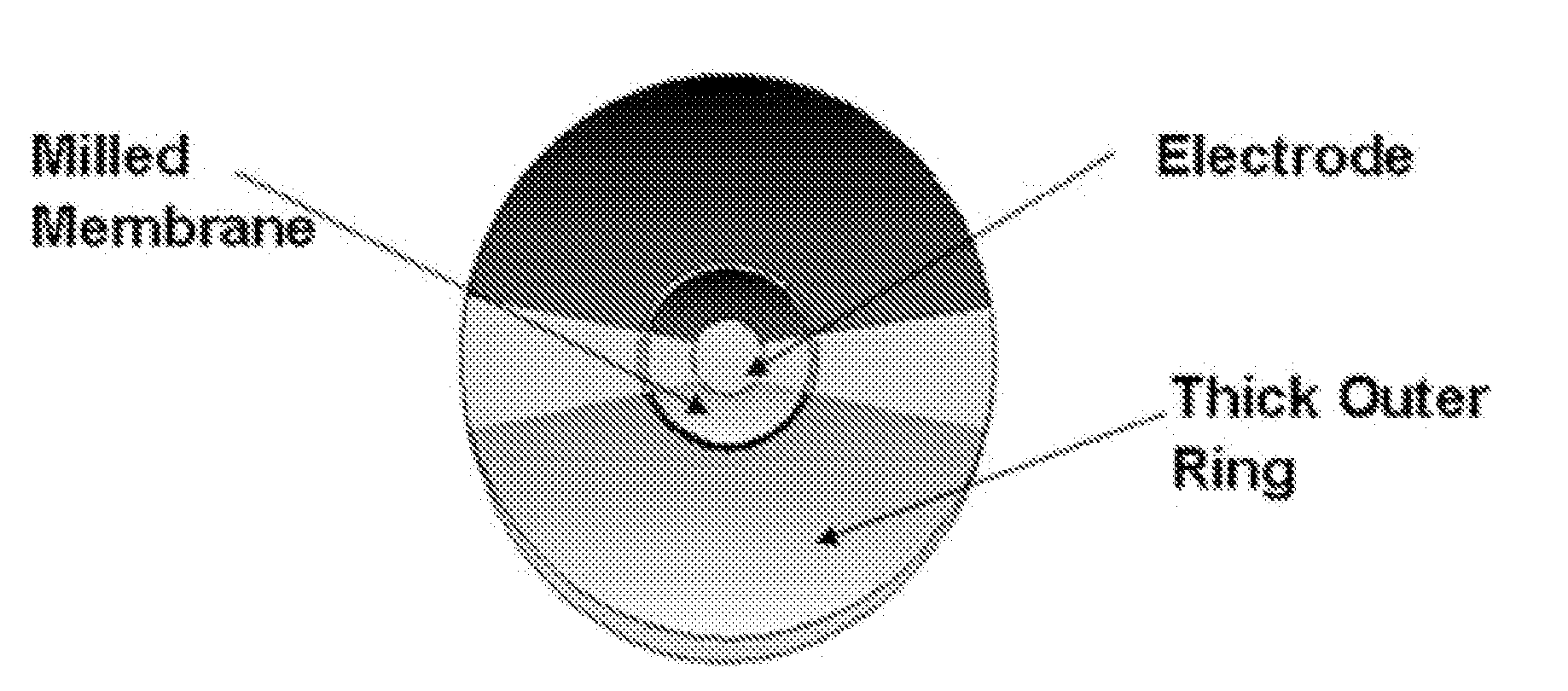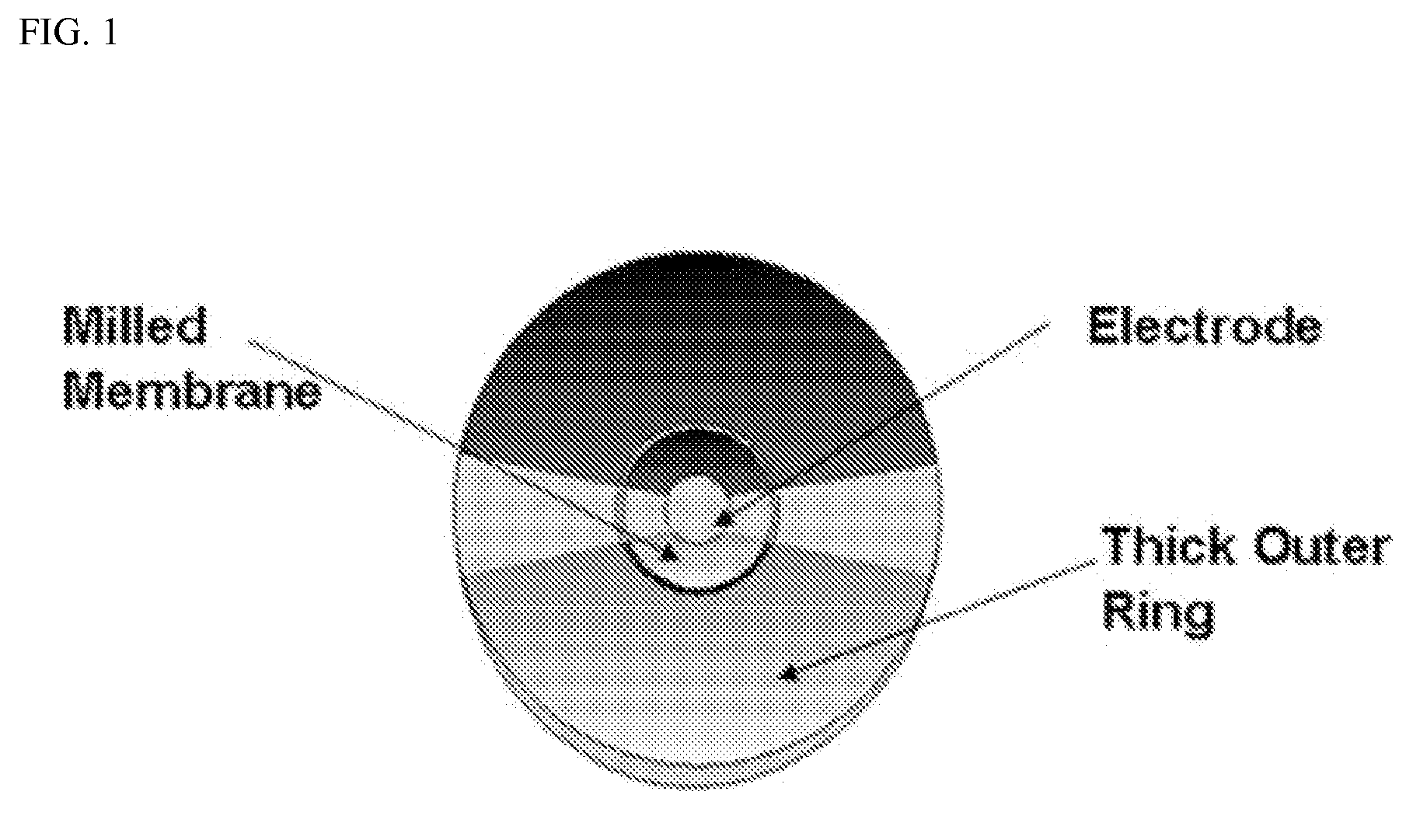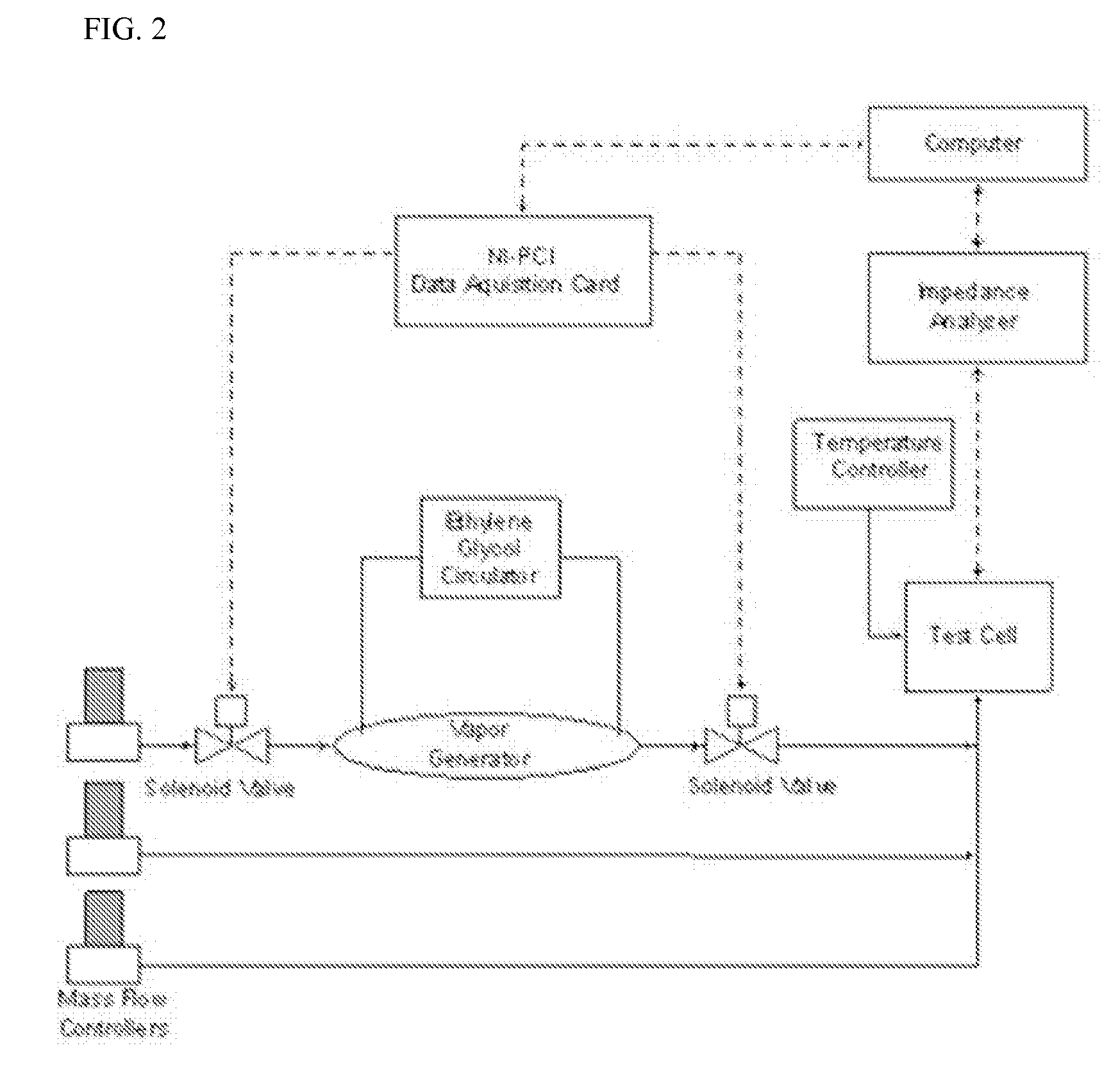High frequency thickness shear mode acoustic wave sensors for gas and organic vapor detection
a technology of high frequency thickness, which is applied in the field of high frequency thickness shear mode acoustic wave sensors for gas and organic vapor detection, can solve the problems of limited significant enhancement of 96 mhz devices, and no significant improvement of detection limit in going to higher frequencies, so as to improve baseline noise and response time. , the effect of simple electronics
- Summary
- Abstract
- Description
- Claims
- Application Information
AI Technical Summary
Benefits of technology
Problems solved by technology
Method used
Image
Examples
example
High Frequency TSM Sensor
[0027]2.1 Apparatus Set-up
[0028]Organic vapor samples were generated at specific concentrations to test the coated TSM sensors. Among the available techniques for generating standard gases, a dynamic method of generating vapor samples was used [16-18]. The equipment is fully automated and a schematic diagram is shown in FIG. 2.
[0029]Organic liquids were contained in four bubbler units housed in a temperature bath. MKS mass flow controllers were used to regulate nitrogen carrier gas through the bubbler units. Each bubbler unit consisted of a flask in which the organic liquid was contained. Multiple mass flow controllers (100 sccm, and 200 sccm) allowed for variation of test sample concentrations. Three streams were used: The carrier stream passing through the bubbler, and the diluting streams. The vapor pressure of the liquid at the bubbler temperature was calculated using an accurate vapor pressure correlation (Wagner's equation) [19]. The mole fraction was ...
PUM
| Property | Measurement | Unit |
|---|---|---|
| operating frequency | aaaaa | aaaaa |
| frequency | aaaaa | aaaaa |
| frequency | aaaaa | aaaaa |
Abstract
Description
Claims
Application Information
 Login to View More
Login to View More - R&D
- Intellectual Property
- Life Sciences
- Materials
- Tech Scout
- Unparalleled Data Quality
- Higher Quality Content
- 60% Fewer Hallucinations
Browse by: Latest US Patents, China's latest patents, Technical Efficacy Thesaurus, Application Domain, Technology Topic, Popular Technical Reports.
© 2025 PatSnap. All rights reserved.Legal|Privacy policy|Modern Slavery Act Transparency Statement|Sitemap|About US| Contact US: help@patsnap.com



